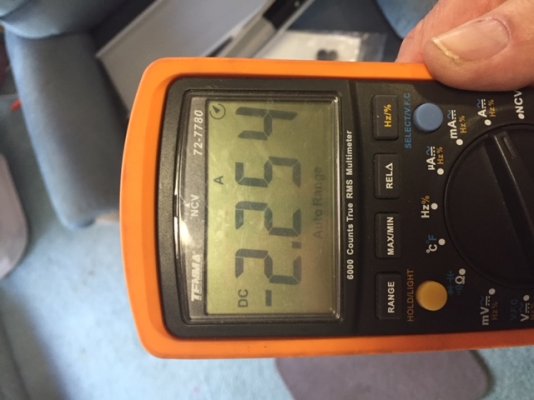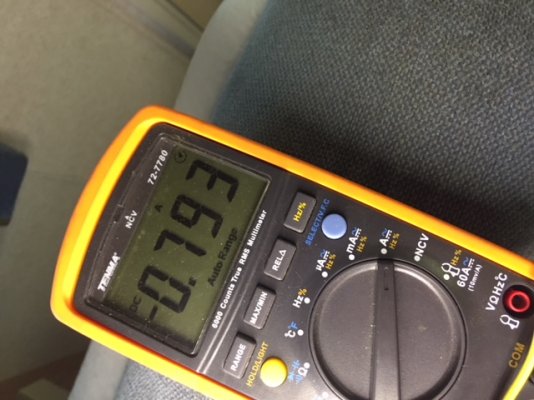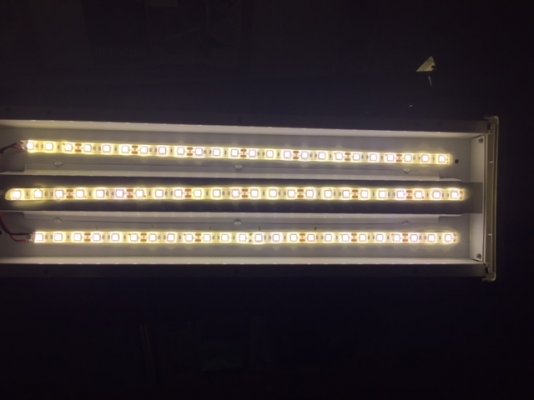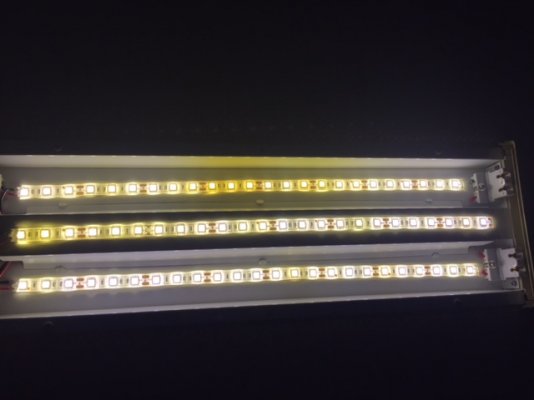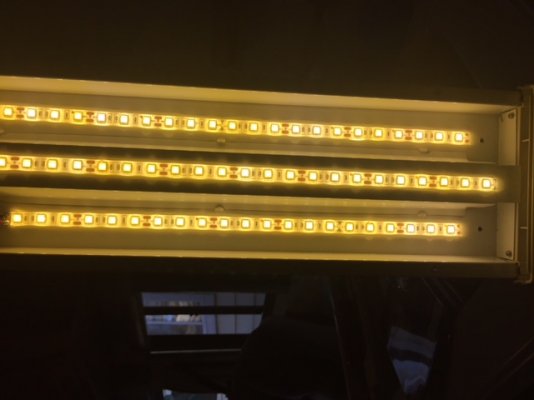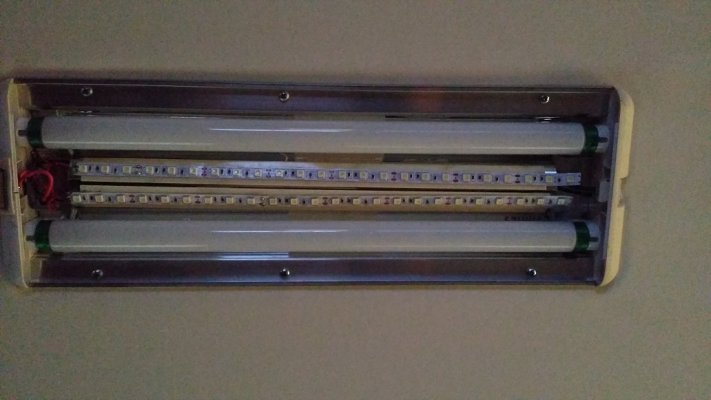WA6CAL
Member
- Joined
- Apr 17, 2017
- Posts
- 17
After having read the recommendations and watching several YouTube videos, I ordered a reel of LED's from Amazon. Cheap enough that's for sure. Took one of the light fixtures down and stripped the T8 tubes, sockets and ballast and installed three LED strips, employing soldered connections. Prior to removing the fluorescents, I measured the current for later comparison to the LED conversion. Upon completion I was satisfied that this was worth the effort, as the current drain was significantly less, and the LEDS produced a pleasing light color with plenty of brightness. Good deal.
So the next day I removed all 6 of the remaining fixtures, and stripped them in preparation for conversion. I was somewhat concerned that the 3M tape on the back of the strips might not be adequate. Several people have stated that they don't stand the test of time, so I left the completed fixture on all night, assuming that the heat generated by the LEDS might cause the adhesive to fail.
Here's where things go awry. I enter the coach the following day to find that about a third of the LEDs have turned yellow, and greatly diminished light output. What the hell? I checked the voltage and the connections, all good. Disgruntled, I left the coach thinking I would deal with it tomorrow. Tomorrow comes and now I find that ALL of the LED's are yellow and although they are glowing, just barely.
Now I have all my fixtures dismantled, have discarded the stripped out hardware, and scratching my head as to the next step. Fast forward to last month at Quartzite, I consult an LED "expert" in the big tent, and show him the photos below. Now he's scratching his head. The only explanation he offered, was that perhaps they were factory defective AND/OR when the converter pumped up to anti-sulfation voltage (does this every 24 hours for a short time) that the LED's did not like the almost 15 volt input. He then assured me that HIS strips would not do this.
So, dear readers, what say you? I'm bum-fuzzled.
Here are the photos of the current drain comparison and the initial, one day and two day results.
So the next day I removed all 6 of the remaining fixtures, and stripped them in preparation for conversion. I was somewhat concerned that the 3M tape on the back of the strips might not be adequate. Several people have stated that they don't stand the test of time, so I left the completed fixture on all night, assuming that the heat generated by the LEDS might cause the adhesive to fail.
Here's where things go awry. I enter the coach the following day to find that about a third of the LEDs have turned yellow, and greatly diminished light output. What the hell? I checked the voltage and the connections, all good. Disgruntled, I left the coach thinking I would deal with it tomorrow. Tomorrow comes and now I find that ALL of the LED's are yellow and although they are glowing, just barely.
Now I have all my fixtures dismantled, have discarded the stripped out hardware, and scratching my head as to the next step. Fast forward to last month at Quartzite, I consult an LED "expert" in the big tent, and show him the photos below. Now he's scratching his head. The only explanation he offered, was that perhaps they were factory defective AND/OR when the converter pumped up to anti-sulfation voltage (does this every 24 hours for a short time) that the LED's did not like the almost 15 volt input. He then assured me that HIS strips would not do this.
So, dear readers, what say you? I'm bum-fuzzled.
Here are the photos of the current drain comparison and the initial, one day and two day results.

